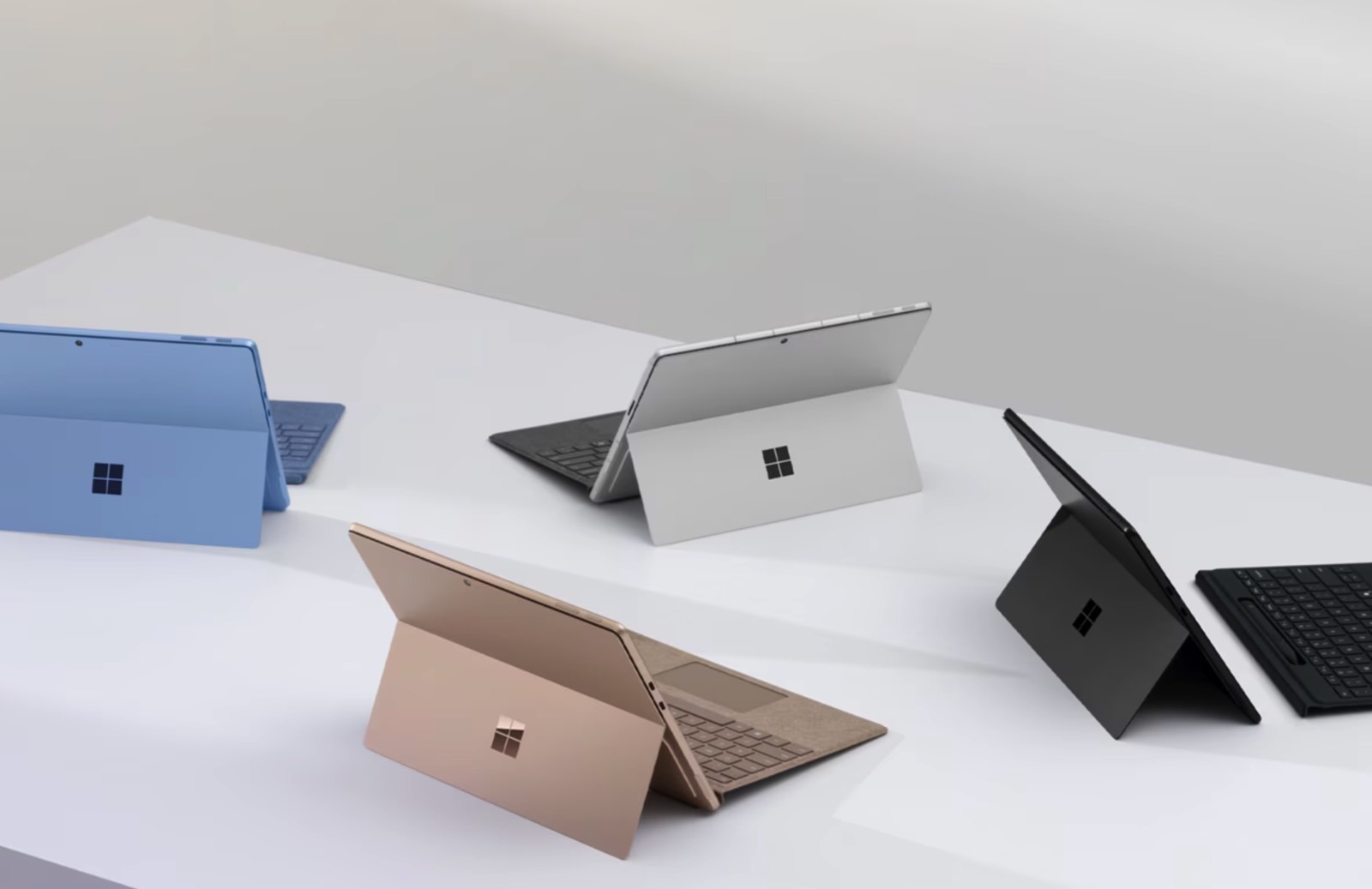I’m a longtime iPhone and Mac user who hoped a month ago that rumors about Microsoft’s upcoming Surface Pro 11 outperforming the M3 MacBooks were accurate. I hoped that Microsoft and Qualcomm could put up a better fight against Apple’s M-series chips. Moreover, I thought Qualcomm’s new Snapdragon X Elite chips powering the Surface Pro 11 would be a herald of next year’s Snapdragon chipsets that will power flagship 2025 Android devices.
It turns out that Microsoft’s new Surface Pro 11 does just that. During its Build 2024 edition, Microsoft explained that the new tablet/laptop can beat the M3 MacBook Air in benchmark tests. On top of that, the new tablet offers better battery life than the MacBook Air, according to Microsoft’s claims.
But this comparison has a glaring oversight that we can’t ignore. The Surface Pro 11 has a built-in fan, while the MacBook Air has a fanless design. Of course, a computer with a fan would perform better than a competitor without one. The fan is the key difference between the M3 MacBook Air and the M3 MacBook Pros.
It goes back to the M1 series. In the fall of 2020, Apple announced the M1 MacBook Air and M1 MacBook Pro simultaneously. The difference between them was the built-in fan. Both laptops could offer the same theoretical top performance, but the Pro could deliver sustained performance thanks to its active cooling.
Microsoft made no secret of targeting the MacBook Air with the Surface Pro 11. This is not surprising because the MacBook Air is Apple’s best-selling laptop. Since moving to Apple silicon, it’s been an even more dangerous rival to Windows machines. That’s why the M1 MacBook Air is still an incredible purchase in 2024.
“You’re going to have the most powerful PC ever,” Yusuf Mehdi, executive vice president and consumer chief marketing officer at Microsoft, told The Verge. “In fact, it’s going to outperform any device out there, including a MacBook Air with an M3 processor, by over 50 percent on sustained performance.”
Sustained performance is a key detail here. The Surface Pro 11 can do better than the MacBook Air, yes, but a better comparison would be between the M3 MacBook Pro and the new tablet/laptop. People have started noticing the fan detail. Also, Surface Pro has “Pro” right in the name.
“It’s something we haven’t had in over two decades, we’ve not had the high ground on having the most performant device. We’re going to have that,” the exec said about the new Surface Pro 11.
The new 2-in-1 that’s now available to preorder from Microsoft beat the M3 MacBook Air in benchmark tests that The Verge saw ahead of the announcements. Real-time reviews will probably confirm the top performance of the Snapdragon X Elite chips. That’s when we’ll see how the new Arm processor fares against the M3 chip powering the 14-inch MacBook Pro, which packs a fan.

Surface Pro 11 battery life claims are also exciting. Here’s how The Verge described them:
On 2022’s Intel-based Surface Laptop 5, it took eight hours, 38 minutes to completely deplete a battery; the new Surface Copilot Plus PC lasted two times that, hitting 16 hours, 56 minutes. That’s an incredible jump in efficiency, and it even beats the same test on a 15-inch MacBook Air M3, which lasted 15 hours, 25 minutes. That’s a whole hour and a half more.
Microsoft ran a similar test for video playback, which saw the Surface Copilot Plus PC hit more than 20 hours in a test, with the MacBook Air M3 reaching 17 hours, 45 minutes. That’s also nearly eight hours more than the Surface Laptop 5, which lasted 12 hours, 30 minutes. If those battery gains extend beyond basic web browsing and video playback, this will be a significant improvement for Windows laptops.
How does the presence of the fan impact this comparison? Well, this one might actually be in Microsoft’s favor. The fan would consume extra energy compared to the M3 MacBook Air. Maybe a fanless Surface Pro 11 might be even more efficient without a fan. On the other hand, active cooling might improve a laptop’s energy efficiency while running more intensive tasks.
Again, maybe Microsoft should run a similar battery comparison against the M3 MacBook Pro, which comes with a fan.
On that note, I’ll also add that the M3 MacBook Pro outperforms the M3 MacBook Air in real-life battery life tests by nearly four hours. It’ll be interesting to see how the Snapdragon X Elite does in similar tests.
Finally, I’ll clarify that Microsoft uses different Snapdragon X chip versions for the Surface Pro 11. We’re looking at Plus and Elite types. Similarly, Apple has different M3 variations powering its MacBook Air and Pro. Even the brand-new M4 chip that powers the iPad Pro comes in two flavors. It’ll be interesting to see how each Snapdragon X chip performs in the wild.
At the end of the day, there’s no question that the Snapdragon X Plus and Elite chips made an impression at Build 2024. This is exactly what the market needed. It’s not just Microsoft releasing new Windows-on-Arm devices this year. You can expect the Qualcomm chips to power laptops from Acer, Asus, Dell, HP, Lenovo, and Samsung.








